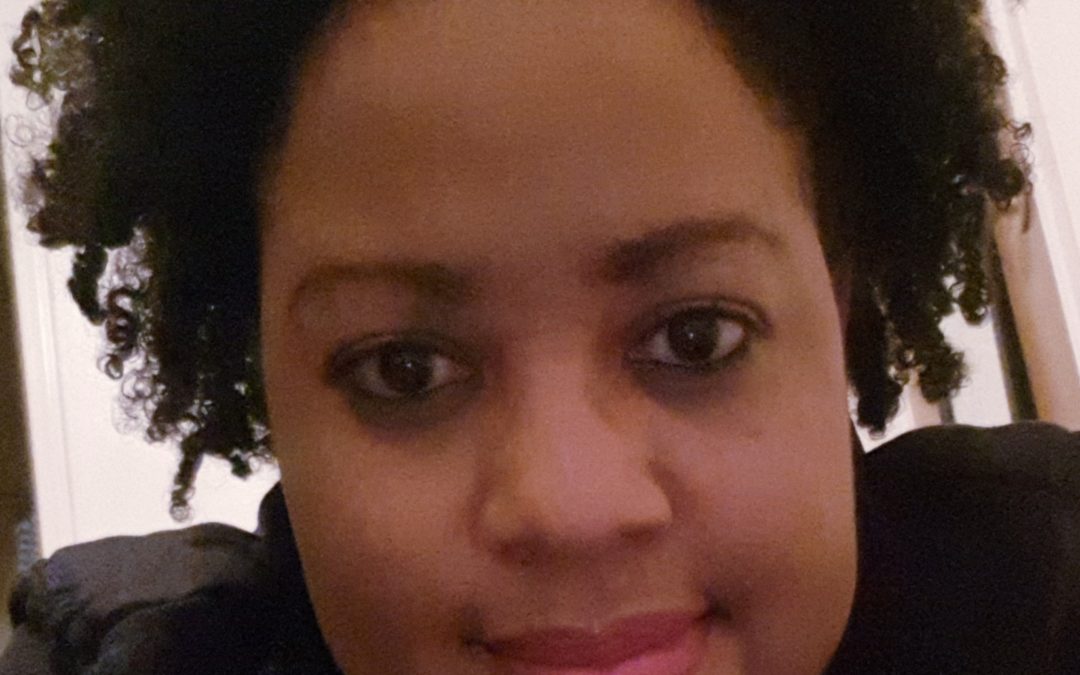There’s no better time than during National Nurses Week to pay attention to the skills nurses have that aren’t acquired in any classroom. Kristi Tanisha Elizee, RN, BSN, and a current master’s degree student focusing on Clinical Nurse Leader (CNL), knows first-hand about the power of a nurse’s intuition.
This past February, Elizee was working the NICU night shift of a Kansas hospital and had been assigned to a mother-baby pair. From the hand-off report with the previous nurse, she had been told, and was able to observe, the baby had head-molding after delivery. Although Elizee noticed the baby’s head looked strange, continued observation revealed only typical behavior. The baby slept, woke, and breastfed well about every three hours.
When she went to perform a head-to-toe assessment of the baby (after notifying the parents), Elizee became alarmed. “When I assessed this baby’s head I could not believe what I felt,” she says. “This baby’s anterior fontanelle was very wide and bulging which extended to her forehead. On top of her head felt soft, the posterior fontanelle was not palpable, and in the same area where the posterior fontanelle was supposed to be, instead the skull was protruding.”
All the baby’s vital signs were good as were the other assessments of the baby, but Elizee knew something was wrong. She also knew she had to trust her intuition. “For me, this was not head-molding,” she says. “I brought the baby back to her mom’s room and immediately went to review the doctor’s documented assessment again on this baby.” Everything appeared to note head-molding, so Elizee, who would need to perform another assessment in four hours began researching information while monitoring the baby and her other patients.
Persistence Works
“I saw a variety of problems including pictures of the way this baby’s head was shaped, and it was called ‘Craniosynostosis,’” she says. According to the Mayo Clinic, “Craniosynostosis (kray-nee-o-sin-os-TOE-sis) is a birth defect in which one or more of the fibrous joints between the bones of [a] baby’s skull (cranial sutures) close prematurely (fuse), before [a] baby’s brain is fully formed. Brain growth continues, giving the head a misshapen appearance.”
Elizee wasn’t sure if what she found was the problem, but she had to speak up. “I was not sure what this baby was diagnosed with but I knew this baby’s head was not normal,” she says. She notified the other nurse on the NICU shift, then her supervisor, and the providing physician was immediately called. The physician initially believed the baby had head-molding as well. “I started to doubt myself again, but I knew deep down this was not normal,” Elizee says. After performing her own assessment, the physician agreed with Elizee. From there, a pediatrician came onboard, and Elizee says she carefully documented everything.
The experience has been simultaneously transformative and heartbreaking. “I have never cared for a baby diagnosed with this condition before so this was my first time,” she says. “The day after when I came back to work, the nurse whom I gave report to about this baby, told me that my assessment findings were right. They had to do a head CT scan and it revealed that this baby had ‘Craniosynostosis.’” The baby was referred to a different hospital, and although Elizee doesn’t know her current story, she’s confident that her persistence made a huge difference in the baby’s life.
“I just had a gut feeling that what I felt was not normal and knew I had to speak up,” says Elizee. Although she doubted herself based on what others were saying, Elizee says she had to honor her intuition. “Nurses just need to follow their instincts,” she says. “Once you know it is not normal or not right, then take action. Do not second guess yourself.”
Big Move for Her Career
Elizee hails from St. Lucia. “I made the decision to move to the U.S.A for growth and development through Avant Healthcare Professionals, an international nurse recruiting agency,” says Elizee, who says she initially considered a career as a veterinarian. “I want to take my nursing career to the next level.”
Oddly enough, Elizee had been considering a switch out of NICU because she was struggling with the role. “When I first started working as an RN new grad, I worked on the medical unit for a month, later I was sent to work in the NICU which I have been in for eight years,” she says. “The first few months being there was tough, and I almost made the decision to go to another unit to work. I was just not enjoying it.” But her NICU nurse-manager noticed and became Elizee’s mentor.
Under her guidance, Elizee says she gained confidence working with these tiny babies—none of whom can tell their caregivers what is bothering them. The experience made all the difference. “NICU is a challenging place to work,” she says now, “but I love the challenge. Every day is a learning experience, and I am embracing it. Now I want to become a neonatal nurse practitioner.”
- Is the FNP Program Right for You? - April 24, 2024
- WOC Nurses Week Highlights Specialty - April 16, 2024
- Honoring Radiology Nurses Day on April 12 - April 12, 2024



